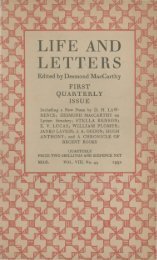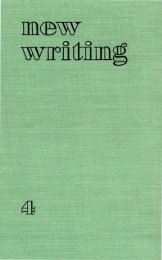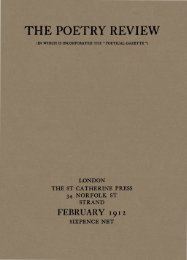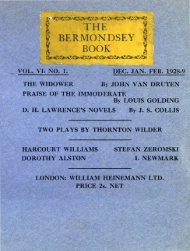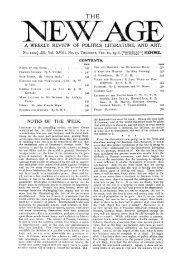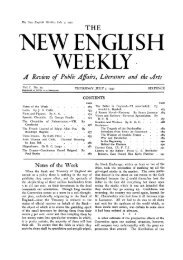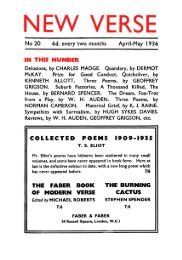Vol. 2 No. 1 - Modernist Magazines Project
Vol. 2 No. 1 - Modernist Magazines Project
Vol. 2 No. 1 - Modernist Magazines Project
You also want an ePaper? Increase the reach of your titles
YUMPU automatically turns print PDFs into web optimized ePapers that Google loves.
J. P. DIGBY 34<br />
original patentees or owners under Charter were no longer<br />
catching fish in their weirs. The owners of angling rights<br />
in the upper reaches rarely saw a fish. So scarce had salmon<br />
become that the price had risen from three pence a pound<br />
in 1820 to one shilling and four pence a pound in 1845.<br />
About this time the Drainage Board, which as before<br />
stated had absorbed the Fishery Commissioners, were<br />
concerned about flooding on the Corrib. Action had been<br />
taken against the then owner to compel him to provide a<br />
gap in his weir to release the flood water. The gap was<br />
subsequently made, the owner taking action against the<br />
Board of Works in the Courts to recover compensation for<br />
loss sustained in the escape of fish through the gap. The<br />
action was defeated in the Courts.<br />
Some few years later, Mr. Ashworth, the then owner of the<br />
Fishery, admitted that he had caught 2,000 fish in one week<br />
and that the gap erected by the Board of Works was the<br />
best job ever done for his Fishery. Thus by accident it was<br />
confirmed that the dearth of fish since 1842 had been<br />
occasioned by the high percentage of fish commercially<br />
caught and the consequent small number of fish reaching<br />
the spawning beds. By an Act of 1848 Boards of Conservators<br />
had been appointed and licence duties for the<br />
different engines had been formulated. In the light of<br />
the experience of the Galway Fishery, agitations for the<br />
promotion of gaps in weirs were frequent, mainly sponsored<br />
by the proprietors of the angling rights. In 1862 a Bill<br />
was passed compelling a gap in all weirs, and this, to some<br />
extent, caused a revival in the Fisheries. It must be understood,<br />
however, that the rape of our Fisheries took place<br />
between the years 1825 and 1842 and that statistics<br />
showing rises or falls in the value of our Fisheries were since<br />
based on the productivity at their lowest ebb in the year<br />
1842.<br />
Since 1862 several Commissions have enquired into the<br />
continued lack of productivity of our waters. It is an<br />
interesting fact that on none of these Commissions did there



